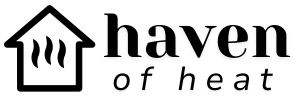Ever wondered how some people can withstand extreme cold and still remain perfectly healthy? Meet Wim Hof, the man who developed a method to tap into our body's potential through breathwork, cold exposure, and commitment. Let’s explore how Wim Hof Breathwork can transform your life.
Who is Wim Hof?
Wim Hof, also known as "The Iceman," is a Dutch extreme athlete famous for his ability to withstand freezing temperatures. He attributes his extraordinary feats to a specific combination of breathing exercises, cold exposure, and meditation, known collectively as the Wim Hof Method.
What is Wim Hof Breathwork?
Wim Hof Breathwork is a central component of the Wim Hof Method. It involves controlled hyperventilation followed by periods of breath retention. This technique is designed to influence the body's autonomic nervous system, improve oxygen flow, and boost overall health.
The Science Behind Wim Hof Breathwork
The Wim Hof Method has garnered interest from scientists worldwide. Research indicates that the method can:
-
Regulate the Autonomic Nervous System: Wim Hof Breathwork can help control functions typically considered automatic, such as heart rate and the immune response.
-
Increase Oxygen Levels: The technique improves oxygenation throughout the body, enhancing energy and endurance.
-
Boost the Immune System: Studies have shown that practicing Wim Hof Breathwork can lead to a stronger immune response, reducing inflammation and boosting resilience.
How to Perform Wim Hof Breathwork
Interested in trying it out? Here’s a step-by-step guide:
Step 1: Get Comfortable
Sit or lie down in a comfortable position. Ensure you’re in a safe environment where you won’t be disturbed.
Step 2: Controlled Breathing
-
Inhale deeply through the nose or mouth, filling your lungs fully.
-
Exhale passively, letting the air flow out naturally without force.
- Repeat this cycle 30 to 40 times, with a steady, relaxed rhythm.
Step 3: Breath Retention
- After the final exhalation, hold your breath. Aim to hold for 1-2 minutes or as long as comfortable.
- During this period, relax and be aware of your body.
Step 4: Recovery Breath
-
Inhale deeply to full capacity.
-
Hold the breath for about 15 seconds.
-
Release and return to normal breathing.
Repeat this cycle 3 to 4 times for optimal results.
Benefits of Wim Hof Breathwork
1. Enhanced Mental Clarity
The increased oxygen flow can improve concentration, focus, and overall mental clarity. Many practitioners report a sense of heightened awareness and presence.
2. Stress Reduction
Wim Hof Breathwork activates the parasympathetic nervous system, promoting relaxation and reducing stress levels.
3. Boosted Immune Function
Regular practice has been linked to a stronger immune response, helping the body fend off illnesses more effectively.
4. Increased Energy Levels
The enhanced oxygenation and the burst of adrenaline from breath retention can lead to increased energy and stamina.
5. Improved Emotional Well-being
Breathwork can help release pent-up emotions, leading to improved mood and emotional balance.
Integrating Cold Exposure
Wim Hof Breathwork is most effective when combined with cold exposure, such as cold showers or ice baths. This practice can:
-
Enhance Circulation: Cold exposure promotes blood flow and strengthens the cardiovascular system.
-
Reduce Inflammation: It can help lower inflammation and pain, aiding recovery from physical exertion.
-
Boost Mood: Cold showers can trigger the release of endorphins, improving overall mood.
Combining Breathwork and Cold Exposure
-
Start with Breathwork: Perform the Wim Hof Breathwork technique as described.
-
Transition to Cold Exposure: After completing the breathwork, gradually expose your body to cold water, starting with cold showers and eventually moving to ice baths.
Safety Precautions
While the Wim Hof Method offers numerous benefits, it’s essential to practice safely:
-
Consult a Doctor: Especially if you have pre-existing health conditions.
-
Never Practice in Water: Avoid performing breathwork while swimming or in water to prevent the risk of blackouts.
-
Listen to Your Body: If you feel dizzy or uncomfortable, stop immediately and rest.
FAQs about Wim Hof Breathwork
Q: Can anyone practice Wim Hof Breathwork? A: Generally, yes. However, individuals with respiratory or cardiovascular issues should consult a healthcare provider before starting.
Q: How often should I practice? A: For best results, practice daily or at least a few times a week. Consistency is key.
Q: Do I need to combine breathwork with cold exposure? A: While combining both can enhance benefits, breathwork alone still offers significant advantages.
Wrapping Up
The Wim Hof Breathwork method is a powerful tool for improving mental and physical health. By mastering this technique, you can boost your immune system, reduce stress, and enhance overall well-being. Ready to start your journey? Dive into the practice today and experience the transformative power of conscious breathing.





Leave a comment